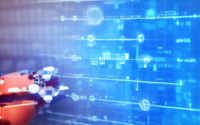Advancing Lunar Exploration with AI and Robotics
Advancing Lunar Exploration with AI and Robotics
Introduction to Lunar Exploration:
Lunar exploration has been an exciting field of study for scientists and space enthusiasts for many years. The moon, being Earth’s nearest neighbor, presents a unique opportunity for humans to expand their understanding of the universe and potentially establish a sustainable presence beyond our planet. Over the years, various space agencies and private companies have sent missions to the moon to conduct research, gather data, and even explore the possibility of human colonization. Advancements in AI and robotics have played a crucial role in enhancing the capabilities of lunar exploration missions, allowing for more complex tasks to be performed with greater efficiency and accuracy.
The Role of AI in Lunar Exploration:
Artificial Intelligence (AI) has revolutionized the way we approach lunar exploration. By leveraging AI algorithms and machine learning techniques, scientists and engineers have been able to develop autonomous systems that can analyze vast amounts of data, make real-time decisions, and adapt to changing environments on the moon. AI-powered rovers and landers are equipped with sensors and cameras that gather information about the lunar surface, allowing them to navigate obstacles, collect samples, and conduct scientific experiments with minimal human intervention.
Benefits of AI in Lunar Exploration:
There are several benefits of incorporating AI into lunar exploration missions. One of the key advantages is the ability to enhance the autonomy of robotic systems, reducing the need for constant communication and control from Earth. This autonomy allows AI-powered rovers to explore more challenging terrains, such as craters and cliffs, where human-operated vehicles would struggle to navigate safely. Additionally, AI can help optimize resource management, improve decision-making processes, and increase the overall efficiency of lunar missions.
Examples of AI Applications in Lunar Exploration:
AI has been successfully applied in various aspects of lunar exploration. For instance, the Chang’e 4 mission, launched by the China National Space Administration, used AI to navigate the rover through unknown terrain on the far side of the moon. NASA’s Lunar Reconnaissance Orbiter (LRO) utilizes AI algorithms to analyze images of the lunar surface and identify potential landing sites for future missions. AI has also been essential in planning the construction of lunar habitats and infrastructure for potential human settlements.
The Role of Robotics in Lunar Exploration:
Robotics has become an indispensable tool in lunar exploration, enabling scientists to conduct a wide range of experiments and operations on the moon’s surface. Robotic rovers, landers, and drones are equipped with advanced sensors, cameras, and manipulators that allow them to perform tasks such as sample collection, rock drilling, and geological analysis. These robotic systems are designed to withstand the harsh conditions of space and operate efficiently in low-gravity environments.
Benefits of Robotics in Lunar Exploration:
The use of robotics in lunar exploration offers numerous benefits. Robots can access hard-to-reach areas on the moon, gather valuable data without risking human lives, and work around the clock without the need for rest or supplies. By deploying robotic systems, space agencies can reduce costs, increase mission flexibility, and achieve scientific objectives that would be impractical or impossible with human astronauts alone. Furthermore, robots can be remotely controlled from Earth or operate autonomously, enhancing the efficiency and effectiveness of lunar missions.
Examples of Robotic Missions in Lunar Exploration:
Several robotic missions have contributed to our understanding of the moon and paved the way for future lunar exploration endeavors. The Yutu rover, part of China’s Chang’e 3 mission, successfully explored the lunar surface and transmitted valuable data back to Earth. NASA’s InSight lander deployed a seismometer on the moon to study its internal structure and seismic activity. The Astrobotic Peregrine Lander plans to deliver scientific instruments and payloads to the moon’s surface, supporting research in areas such as lunar geology and resource utilization.
Future Prospects of AI and Robotics in Lunar Exploration:
As technology continues to advance, the future of lunar exploration holds great promise with the integration of AI and robotics. Scientists and engineers are developing more sophisticated AI algorithms that can learn from past experiences, collaborate with other AI systems, and adapt to changing environments autonomously. Robotics is also evolving rapidly, with the development of advanced robotic systems capable of performing intricate tasks, self-repairing, and even replicating themselves in space. Together, AI and robotics will play a pivotal role in enabling humans to establish a sustainable presence on the moon, conduct groundbreaking research, and unlock the mysteries of the lunar environment.

